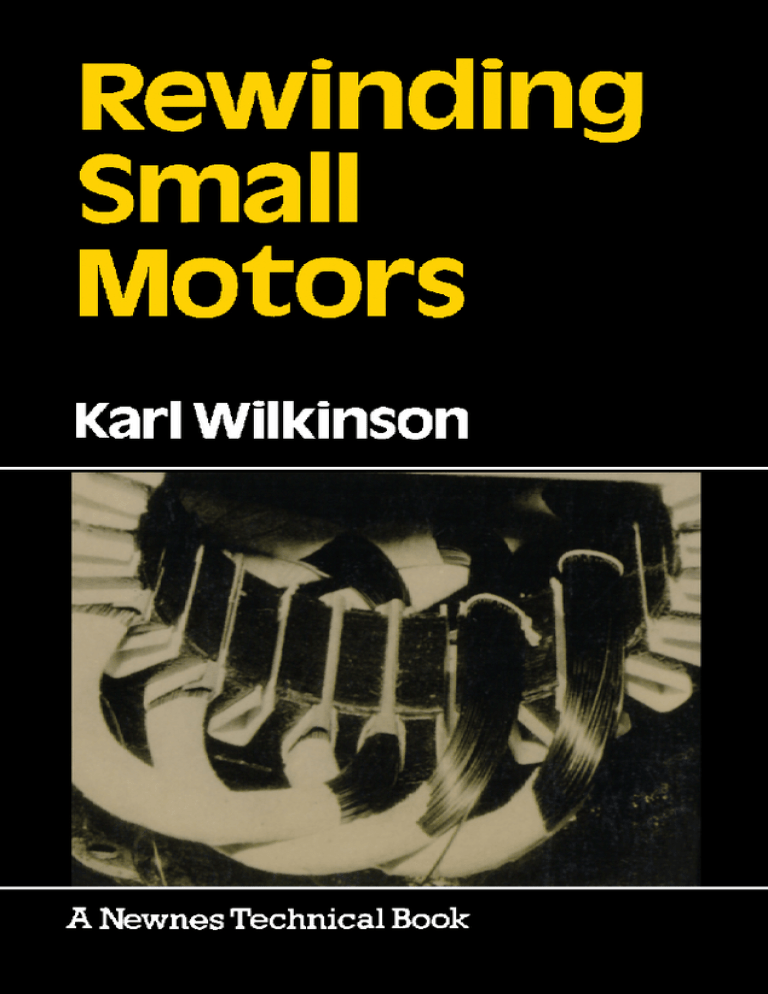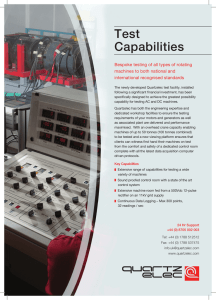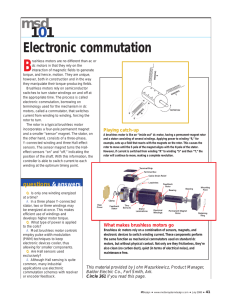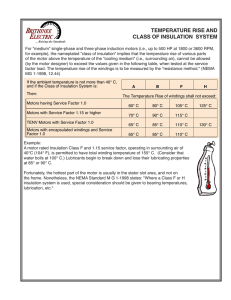
Rewinding Small Motors
Related titles
Dictionary of Electrical Engineering
Electric Wiring (Domestic)
Electrical Engineer's Reference Book
Horne Electrics
N ewnes Electrz'cal Pocket Book
Questions and Answers on Electric Motors
Questions and Answers on Electric Wiring
Questions and Answers on Electricity
Wiring Circuits
Rewinding Small
Motors
KARL WILKINSON
NEWNES
TECHNICAL
BOOKS
Newnes Technical Books
is an imprint of the Butterworth G r o u p
which has principal offices in
L o n d o n , Boston, Durban, Singapore, Sydney, T o r o n t o , Wellington
First published 1965
Reprinted 1971, 1977 (with revision), 1980, 1983
(O Butterworth & Co. (Publishers) L t d , 1965
All rights reserved. N o part of this publication may be reproduced or
transmitted in any form or by any means, including photocopying and
recording, without the written permission of the copyright holder,
application for which should be addressed to the publishers. Such written
permission must also be obtained before any part of this publication is
stored in a retrieval system of any nature.
T h i s book is sold subject to the Standard Conditions of Sale of N e t Books
and may not be resold in the U K below the net price given by the
Publishers in their current price list.
I S B N 0 408 00308 1
Printed in England by T h e Whitefriars Press L t d ,
T o n b r i d g e , Kent.
Contents
ι
Introduction
2
Single-phase Stators
14
3
Three-phase Stators
27
4
Universal Motors
35
5
D . C . Motors
51
6
Former Making
61
7
Co// Winding
67
8
Armature Winding
82
Appendix
9
127
This page intentionally left blank
Preface
The application of electric motors are numerous and
varied and the types in use today range between large and
small, simple and complicated. Even with the most efficient
maintenance, all these have to be repaired sooner or later.
This book has been written to show in a practical way how
rewinding is carried out and it will be of help to fitters,
engineers, apprentices, students and all who have access to a
workshop with the necessary equipment. The text, which is
illustrated with over 100 drawings and photographs, has
been simply written but nevertheless includes much valuable
information.
The various types of motors covered include split phase,
capacitor-start, repulsion, repulsion-induction, repulsionstart, shaded-pole, three-phase induction, universal and d.c.
Although the rewinding of motors is specifically dealt with,
the technique of rewinding is, of course, applicable to the
stators, rotors and armatures of a.c. and d.c. generators.
KARL WILKINSON
Eastbourne
This page intentionally left blank
I
Introduction
The term f.h.p. motor is generally applied to a wide range
of small machines up to and including those of 746 W. This
generic term embraces motors of various types, which may
be listed as follows: split phase; capacitor start; capacitor
start and run; repulsion, repulsion induction; repulsion
start, induction run; shaded pole; three-phase induction;
universal, and d.c.
This list by no means includes every possible variety, but
it certainly covers the majority of small motors likely to be
encountered. The use of f.h.p. motors in general has increased
to a remarkable extent during the last decade; and today
they find many applications in industry, in the workshop, in
the office and in the home. In view of the diversity of types
of f.h.p. motor, it is proposed to explain the winding of
representative items, since once the fitter has become accustomed to the basic types he will gradually be able to handle
others of increasing complexity.
Rewinding
Rewinding is an operation in which the original winding
is accurately copied and replaced with new material. The
actual design of any particular motor is nearly always a
matter for a highly qualified technician and is, generally
speaking, beyond the scope of a normal fitter until he has
gained considerable experience and acquired a fund of
technical knowledge. The situation is further complicated by
the fact that many small motors are the result of a long
series of modifications to a prototype.
For present purposes, winding is synonymous with rewinding, because the same technique is usually adopted, though
of course the rewinder has the more difficult task. Not only
must he determine the winding data but he has also to
produce a first-class job without, in many instances, any
previous experience of the design in question.
9
Motor Windings
In order to produce torque, all motors require the interaction of two sets of magnetic fields. The usual arrangement
is for these fields to be produced by two sets of windings,
both carrying current derived from the supply. One set of
windings is situated on the stationary outer member or stator
and the other set of windings on the rotating member (rotor
or armature).
In a.c. motors of the induction or repulsion type, the stator
windings are usually, except in shaded-pole motors, distributed in slots around the stator core. These windings are
connected to the supply and the field produced by them
induces currents in the rotor windings. In universal and d.c.
motors, the field coils are of the salient-pole type and together
with the armature coils are connected to the supply.
Split-phase Induction Motors
This type of single-phase motor has a squirrel-cage rotor.
The stator core, constructed of laminations, has two windings
wound in its slots, a main winding for running and an
auxiliary winding for starting. The stator windings are connected in parallel across the mains during the starting period.
Immediately the motor reaches full speed, the starting
winding must be disconnected. This can be accomplished
automatically by centrifugal switch which opens the auxiliary
circuit at about 80 per cent of the normal running speed.
An alternative is to employ a relay with its coil connected in
series with the running winding, the fall of current through
the relay as the motor speed rises causing the relay switch in
the starting-winding circuit to be opened. The starting
winding is short-time rated and must not be left in circuit
for more than a few seconds, as it would become severely
overheated.
Like all induction motors, split-phase motors have a shunt
characteristic, i.e. a fairly constant speed independent of load
conditions.
Capacitor Motors
The single-phase capacitor-start induction motor is almost
identical in construction with the split-phase machine, but to
obtain a higher starting torque with less current, a shorttime-rated electrolytic capacitor is used in series with the
auxiliary winding. The circuit of the auxiliary winding is
broken by a centrifugal or other switch before full speed is
reached.
In the capacitor-start capacitor-run induction motor, two
10
capacitors are employed. This allows a portion of the total
capacity to be left in the auxiliary circuit while running, so
improving the power factor and consequently reducing the
running current and heating.
For light duties, a capacitor-run induction motor may be
used having a single capacitor which is left in the auxiliarywinding circuit permanently. No switch is required as the
auxiliary circuit is in action during starting and running.
Repulsion Motors
These single-phase machines have a stator wound with a
single winding. The rotor is very similar to a d.c. armature
with commutator. The brushes are permanently shortcircuited. Currents induced in the rotor by the magnetic
field from the stator give the rotor a magnetic polarity that,
with suitable brush position on the commutator, causes
repulsion to take place between like poles of the stator and
rotor. No rotation results if the brush axis corresponds with
the axis of the stator winding, called the neutral position, the
magnetic polarity of the rotor then being the same as that of
the stator. To get reversed rotation, the brushes must be
moved round to a corresponding point on the other side of
the neutral position. It is also possible by tapping the stator
winding to obtain reversal by switching.
It is usual to short-circuit all the commutator segments by
a centrifugally-operated device, thus converting the machine
into an induction motor during the period of running. The
brushes are also lifted in some cases to reduce wear.
To avoid the complication of the short-circuiting device,
the rotor may be arranged with a squirrel-cage winding at
the bottom of the slots. This takes over at speed and gives
induction-motor characteristics.
Where variable speed is required, a plain repulsion motor
(without the short-circuiting and brush-lifting mechanism)
can be used, the speed control being obtainable by rocking
the brushes, which may be connected to a hand-wheel or
lever on the motor end-bracket.
The plain repulsion motor has series characteristics with
which speed rises as the load on the motor is reduced; as
commutation cannot always be made perfect, fairly frequent
replacement of brushes may be necessary.
Shaded-pole Induction Motor
For very small horsepowers on single-phase supplies the
shaded-pole induction motor is useful on account of its
simplicity and robustness. The rotor is of the squirrel-cage
II
pattern. The stator has salient poles somewhat similar to
those of universal motor but with the field coils connected
across the supply. Each pole is divided by a slot cut in the
laminations and one of these divided portions in each pole is
surrounded by a heavy copper band, known as a shading coil
or loop.
Three-phase Induction Motors
Where three-phase supply is available a three-phase motor
may be preferred to a f.h.p. single-phase motor. The rotor
is of the usual squirrel-cage type. Three stator windings
corresponding to the number of supply phases are wound in
the stator slots (two-phase motors have two stator windings).
As there are no auxiliary or starting windings, no special
centrifugal or other starting switch is needed.
Universal Motors
Universal motors (operating on a.c. or d.c. supply) usually
range from about i o W t o 400 W. They are constructed on
similar lines to d.c. machines, but the field core must be
laminated. They are series wound, that is the field coils are
connected in series with the armature winding. They cannot
satisfactorily be made to run at less than about 2000 r.p.m.
If similar performance on a.c. and d.c. is required from
motors running at less than about 3000 r.p.m., a tapped
field winding is desirable.
Although classed as universal, the voltage range is limited
to about plus or minus 5 per cent of the voltage for which
the motor is wound and the speed will vary approximately
in proportion to the variation of voltage.
Universal motors have a series characteristic so that they
run at their rated speed only on the rated load. If the load is
reduced the speed will rise. Such motors are suitable for
driving fans, vacuum cleaners, domestic sewing machines,
portable tools, etc., where the load is constant or where a
steadily maintained speed is not important. As brush wear
takes place more rapidly in universal motors they are not
generally considered suitable for long-hour duty.
D.C. Motors
Although the field core of a d.c. machine need not be
laminated, in f.h.p. sizes the field core is generally built up
of one-piece laminations riveted together, comprising the
poles and yoke. The field poles are of the salient-pole type,
each being wound with a single coil. The use of two poles,
12





